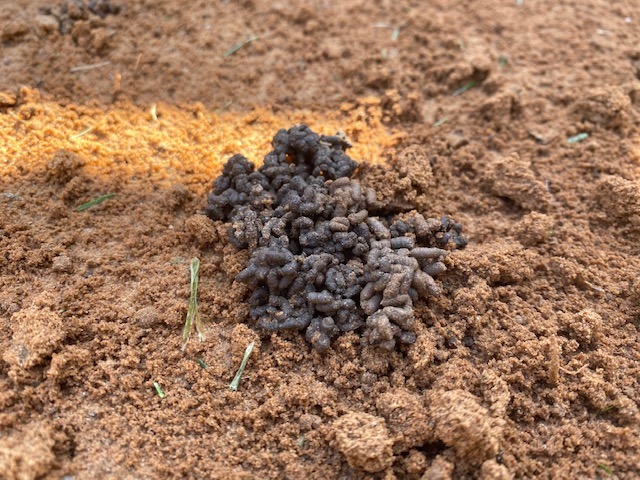Earth worms in lawns
Author: Stefan Palm Date Posted: 10 July 2023
During Winter, it’s not uncommon to see mounds of dirt appearing on top of your lawn. This may be an indicator that you have earth worm activity in your soil.
Most gardeners will know that worms are good for the soil for a whole bunch of reasons (which I’ll get to later), but they can leave behind their casts on the surface when conditions are wet, typically between May and September. At this time of year, we get a reasonable amount of enquiry from customers wanting to know what the mounds are and then how to get rid of them. Almost everyone wants worms, but not everyone wants to see casting mounds. While mowing the lawn on the weekend, there was such a large amount of mounds that the lawn looked quite muddy when I had finished, not to mention the mess they made of the mower and my shoes!

Earthworms live in the top 30cm of the soil and come to the surface to eat, breathe, hatch and breed and of course, this is when they deposit their casts, generally during the night. While this can be messy and unsightly, worms bring many benefits to your lawn – lawns with worms are better off than lawns without them!
Benefits
As they burrow through the soil under your lawn, they naturally aerate it, introducing air which lawns love. In their burrowing, they eat soil, organic material, and lawn thatch, breaking it down as they digest it. This has a two-fold effect. Firstly, in doing this, they remove thatch from the lawn, which is a good form of natural pruning, and secondly, they produce castings. Worm castings could be considered nature's finest soil conditioner, providing rich nutrients and healthy bacteria for all lawns and plants. When the soil is wet, worms come to the surface and deposit their castings, which over time, are watered back into the lawn, releasing their nutrients and goodness where it is needed most.
What not to do
Surprisingly, customers often ask how they can get rid of worms in their lawns. Hopefully, I’ve convinced you that they should be a welcome guest! In any case, there is no domestically available chemical that you can use to kill them, so if you have more than you'd like, it's more a case of managing how frequently they come to the surface. Given that they come to the surface more readily when it's wet, don’t use a hose to water the castings into the soil. By doing this, there is a fair chance that you’ll encourage them to come up more frequently.
What to do
If you’re getting an excessive amount of casting piles on the surface, then consider the following:
- Improve drainage so that your soil is not waterlogged or slow to drain.
- Make sure that the lawn isn’t being excessively irrigated during the Winter.
- Allow the castings to dry out, then brush them off.
- Regularly scarify your lawn and pick up clippings and leaves to reduce food sources.
Be assured that earthworms will never damage your lawn or cause dead spots. They are a sign that you have healthy soil and will do a mighty job of helping it to stay healthy. At worst, they can cause some mess which may need tidying up, but in my opinion, that’s a small price to pay.


